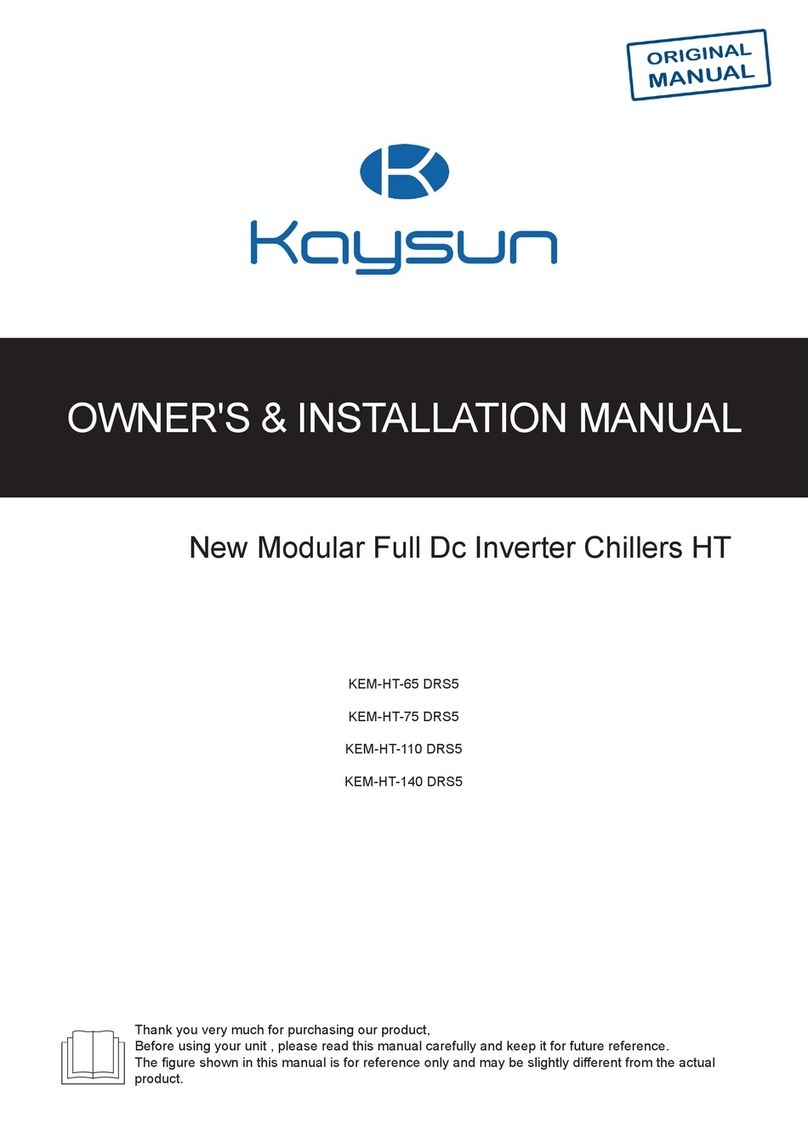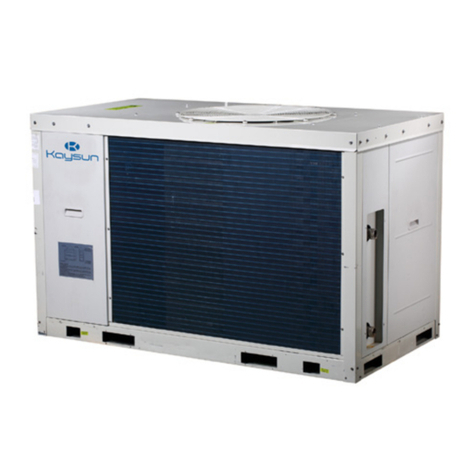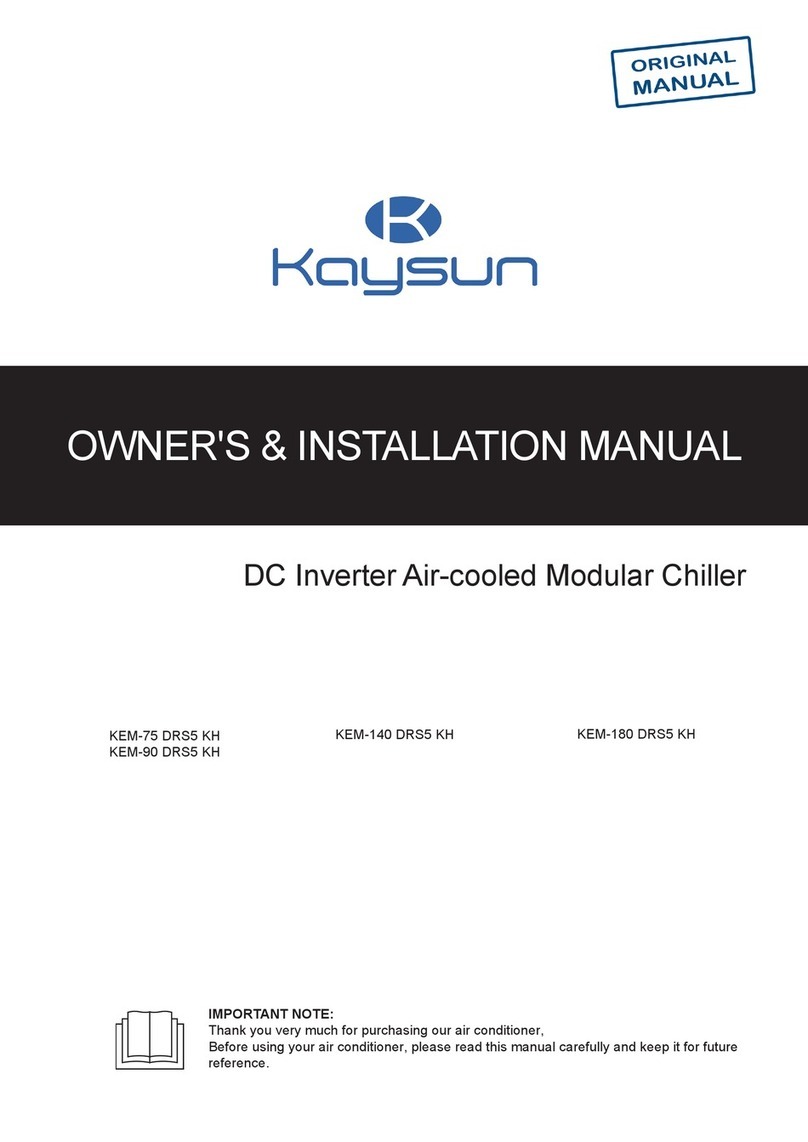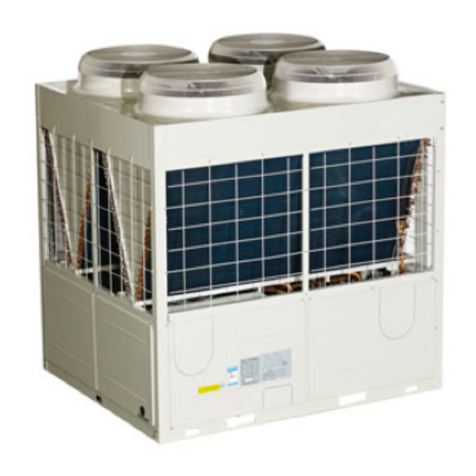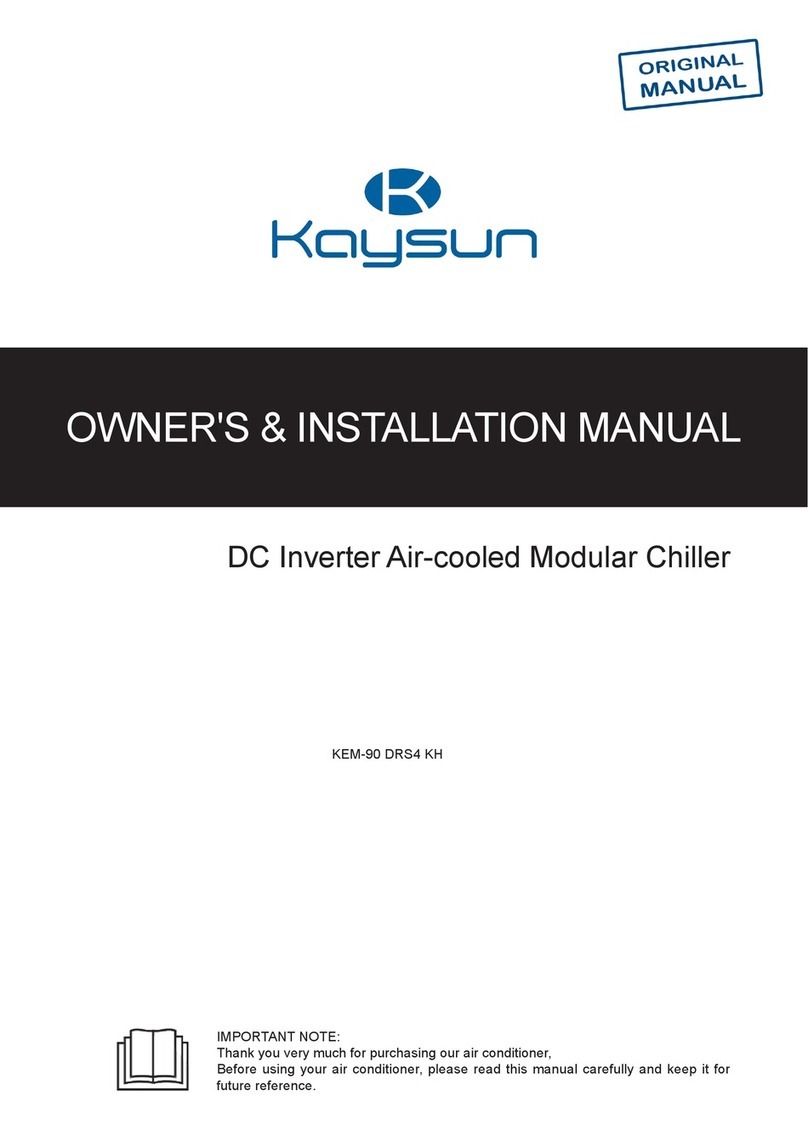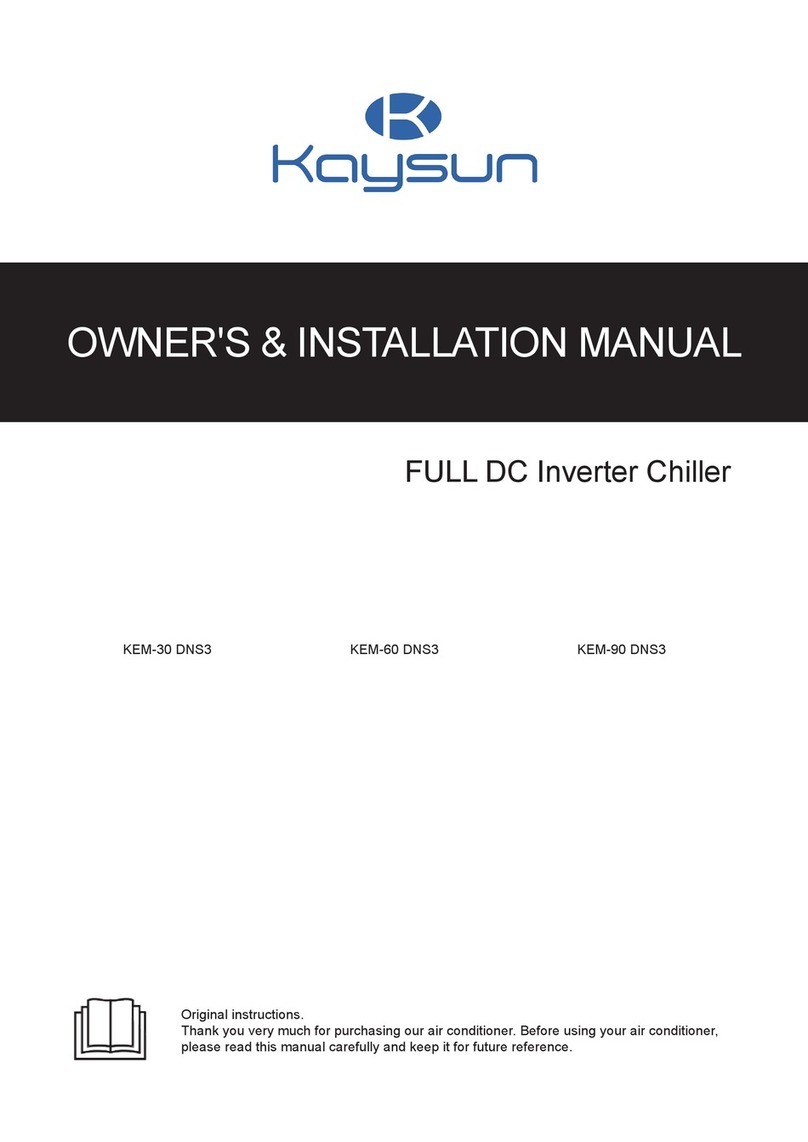
06
Repair and maintenance of electrical components
should include initial safety checks and component
inspection procedures.
In the event of a fault that could compromise safety,
no power supply should be connected to the circuit
until it is satisfactorily dealt with. If the fault cannot be
corrected immediately but it is necessary to continue
operation, an adequate temporary solution should be
used. This should be reported to the owner of the
equipment to give advises to all parties involved.
Initial safety checks should include the following:
Capacitors should be discharged in a safe
manner to avoid possibility of sparking;
No live electrical components and wiring should
be exposed while charging, recovering or purging the
system;
The earth bonding should be continuous.
During repairs of sealed components, all power
supplies should be disconnected from the equipment
where work is in progress prior to any removal of
sealed covers or other components. If it is absolutely
necessary to keep a power supply connected with the
equipment during servicing, a permanent leak
detection should be performed at the most critical
point to avoid a potential hazard.
Particular attention should be paid to the following to
ensure that the casing is not altered in such a way
that the level of protection is affected by working on
electrical components. This includes damage to
cables, an excessive number of connections,
terminals not compliance with original specifications,
damage to seals, and incorrect fitting of glands.
Ensure that seals or sealing materials have not
degraded in such a manner that they no longer serve
for the purpose of preventing the ingress of
flammable atmospheres. Parts for replacement
should be in accordance with the manufacturer’s
specifications.
Do not apply any permanent inductive or capacitance
loads that exceed the permissible voltage or current
of the equipment in use to the circuit..
Intrinsically safe components are the only types that
can be worked on while live in the presence of a
flammable atmosphere. The test apparatus should be
provided with the correct rating.
The following checks should be applied to
installations using flammable refrigerants:
The charge size should depend on the size of the
room within which refrigerant containing components
are installed;
The ventilation machinery and outlets should
operate adequately and not be obstructed;
If an indirect refrigerating circuit is used, the
secondary circuit should be checked for any
refrigerant;
Marking to the equipment should remain visible
and legible. Illegible markings and signs should be
corrected;
Refrigeration pipes or components should be
installed in positions where they are unlikely to be
exposed to any substance which may corrode
refrigerant containing components, unless the
components are constructed of materials that are
inherently resistant to corrosion or are suitably
protected against corrosion.
WARNING
The following applies to R290 refrigerant
systems.
Prior to work on systems containing
flammable refrigerants, safety checks are
necessary to minimize the risk of ignition.
For repair of the refrigerating system, the following
precautions should be complied with prior to
conducting work on the system.
Work should be undertaken under a controlled
procedure so as to minimize the risk of a flammable
gas or vapor being present while the work is being
performed.
All maintenance staff and others working in the local
area should be instructed on the nature of work being
carried out. Work in confined spaces should be
avoided. The area around the workspace should be
sectioned off. Ensure that the area is safe through
control of flammable materials.
The area should be checked with an appropriate
refrigerant detector prior to and during work, to
ensure the technician is aware of potentially
flammable atmospheres.
Ensure that the leak detection equipment being used
is suitable for use with flammable refrigerants, i.e. ,
the equipment should be non-sparking, adequately
sealed or intrinsically safe. If any hot work is to be
conducted on the refrigeration equipment or any
associated parts, appropriate fire extinguishing
equipment should be available to hand. Have a dry
powder or CO2fire extinguisher adjacent to the
charging area.
No person carrying out work in relation to a
refrigeration system which may expose any pipe that
contains or has contained flammable refrigerant
should use any sources of ignition in such a manner
that it may lead to the risk of fires or explosions.
All possible ignition sources, including lighted
cigarettes, should be kept sufficiently far away from
the site of installation, repair, removal and disposal,
during which flammable refrigerant can possibly be
released into the surrounding space.
Prior to work, the area around the equipment should
be checked to make sure that there are no flammable
hazards or ignition risks. “No Smoking” signs should
be displayed.
Ensure that the area is in the open or adequately
ventilated before breaking into the system or
conducting any hot work. A degree of ventilation
should continue during the work. The ventilation
should safely disperse any released refrigerant and
preferably expel it externally into the atmosphere.
For any change of the electrical components, they
should be fit for the intended purpose and comply
with the correct specifications.
Always follow the manufacturer’s maintenance and
service guidelines. In case of any doubt, consult the
manufacturer’s technical department for assistance.
About the Refrigerant
